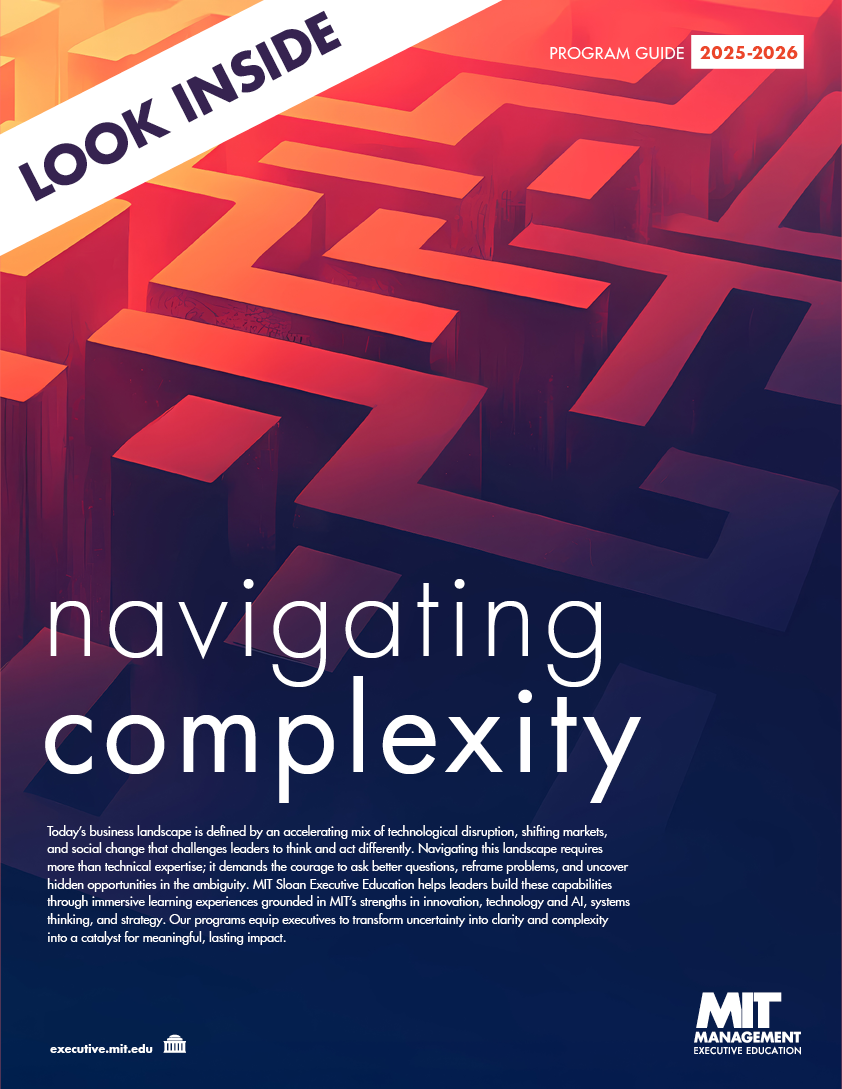The world of business is changing, and the practice of leadership has to change along with it. While the classic style of corporate leadership is based on a "command and control" style, this methodology is less prevalent today.
A new generation of digital-native employees and technologically enabled business models has brought with it a new style of management, based on "cultivate and coordinate" principles. Rather than dominating their teams and departments, effective leaders are motivating and encouraging their people. This is transformational leadership.
As a current or aspiring executive, your ability to take on these transformational leadership skills and priorities can help you stay competitive amid changing conditions. A business leadership structure built on a transformational model, with inspirational motivation and a strong mission statement taking over for a more straightforward command style, is ideal for guiding a company into the future.
See More: Watch a webinar that illuminates the ways good transformational leaders can thrive in uncertain conditions.
What does transformational leadership mean?
Transformational leadership is a fresh model based on honing a vision for how to lead people in the present while also planning for the future. This kind of leadership acknowledges that individual employee effort determines the success of a company and focuses on helping each member of a company's staff achieve their potential.
As technological shifts and business model adjustments force organizations to pivot and evolve, people are the common thread. By becoming a more adept, empathetic leader in a transformational leadership style, you can maximize the performance of your team while pursuing important company goals. This pattern can hold through everyday operations and major evolutions alike.
Since no two leaders are exactly the same, there isn't one perfect way to be a transformational leader. Your ideal style will differ from other executives', incorporating elements of your personality. Being authentic and true to yourself aligns with the more empathetic and people-focused style that comes with transformational leadership.
Building X-teams
One of the hallmarks of a modernized leadership approach is the use of external teams, also known as "X-teams." This model, developed over 20-plus years but still not universally used, involves permeable, flexible teams that can incorporate outside experts and network members alongside stakeholders.
These teams perform external- and internal-facing work, looking for novel solutions to clearly identified problems. Implementing an X-team structure is a three-step process:
- Sense-making: The team learns everything it can about its target problem by consulting internally and researching externally.
- Ambassadorship: Team leaders align the group's activities with organizational goals and attain buy-in from upper management.
- Task coordination: The team sets out individual responsibilities and sets specific goals and processes to guide it to an answer to its animating question.
Transformational leaders and X-teams are two of the components in a modern, flexible approach to organizational performance improvement.
Read More: See how externally focused teams (X-teams) reflect today's leadership thinking.
How does transformational leadership help companies thrive?
In today's business climate, companies that are overly rigid or controlled by inflexible leadership styles may struggle to keep up with more adaptable competitors. This is where transformational leadership becomes a direct advantage for your organization.
Companies directed by transformational leaders can succeed along several axes, including:
- Developing more innovative offerings.
- Getting optimal performance from teams.
- Keeping up with industry-wide change.
By encouraging people to achieve their full potential through its cultivate and coordinate philosophy, transformational leadership can bring teams together to pursue innovation and inventive solutions to problems. The present-day networked economy and the rising millennial and Gen Z workforce are more compatible with this style of inspirational motivation than more rigid command and control approaches.
Nimble thinking and collaborative problem-solving are hallmarks of a successful decision-making process today. Encouraging employee engagement and participation from many levels by creating a culture of trust and participation is a major advantage of modern transformational leadership over older styles.
While a transformational leader can't entirely remove office politics and bureaucracy from organizations, there is power in being aware of these structures and handling them in a more mindful way. By examining structures and using executive power in a less controlling and more supportive way, it's easier to bring out good ideas and impressive performances from colleagues at all levels.
Read More: Discover the connection between nimble operations and organizational success.
Learning about transformational leadership through executive education
Modern management knowledge isn't an intrinsic value — you can learn transformational leadership skills through dedicated executive education. The Transforming Your Leadership Strategy course from MIT Sloan Executive Education, led by Distinguished Professor of Management Deborah Ancona, is designed to produce self-aware leaders in tune with a distributed style.
Rather than forcing participants to take on a strict list of characteristics, the leadership development course helps individuals access their own leadership signatures, and also notice others'. Since communication and collaboration are such vital elements of modern leadership, the course incorporates pair and group work.
Leaders in the course receive private coaching from MIT Sloan executive coaches in addition to participating in work with the full class. By applying the lessons of transformative leadership to your own situation and interests, you can prepare yourself to become a positive motivator for the people who report to you.
See More: Watch a webinar on how to elevate your leadership signature.
The 4-CAPS+ Framework
One of the major leadership development topics within the Transforming Your Leadership Style curriculum is the 4-CAPS+ model, previously known as 4-CAP and 4-CAP+, and iterated on over the years. Deborah Ancona herself developed the model alongside fellow faculty members Thomas Malone, Wanda Orlikowski, and Peter Senge.
The framework helps good transformational leaders win the respect of their colleagues and lead through trust, credibility, and purpose rather than more overt types of control. In such a model, employee engagement and personal growth matter more than obedience. It's designed around the key capabilities of:
- Sensemaking: Taking in new information and turning uncertainty into an orderly way forward for a team or organization.
- Relating: Showing awareness of others and emotional intelligence, while influencing colleagues rather than commanding them.
- Visioning: Designing a mission or vision based on inspiration and aligning that personal view with overall company objectives and values.
- Inventing: Creating exciting new ideas and alternative ways of accomplishing goals and objectives while prioritizing innovation.
- Building Credibility: Acting with integrity and matching actions to words. The value around which the other four capabilities orbit.
Becoming an effective transformational leader who convinces instead of commands is a worthy goal for today's managers, one you can take on directly through executive education.
Read More: Explore the 4-CAPS+ model in greater detail.
Get started with a transformational leadership style
Aligning with transformational leadership and learning frameworks such as 4-CAPS+ can help you set yourself apart. This holds true whether your primary goal is improving your current management performance to achieve organizational success or building a resume to aim for a new executive position.
Transformational leadership, in its flexibility and focus on people over process, is aimed at both present and future needs. Companies will keep evolving in the years ahead. Managers who are too rigid in their thinking could end up falling behind the curve. Building a management identity around credibility and collaboration is a way to prepare for what's next, even if it's not yet clear what form that future will take.
Enroll in Transforming Your Leadership Strategy and discover the 4-CAPS+ leadership framework for yourself.








